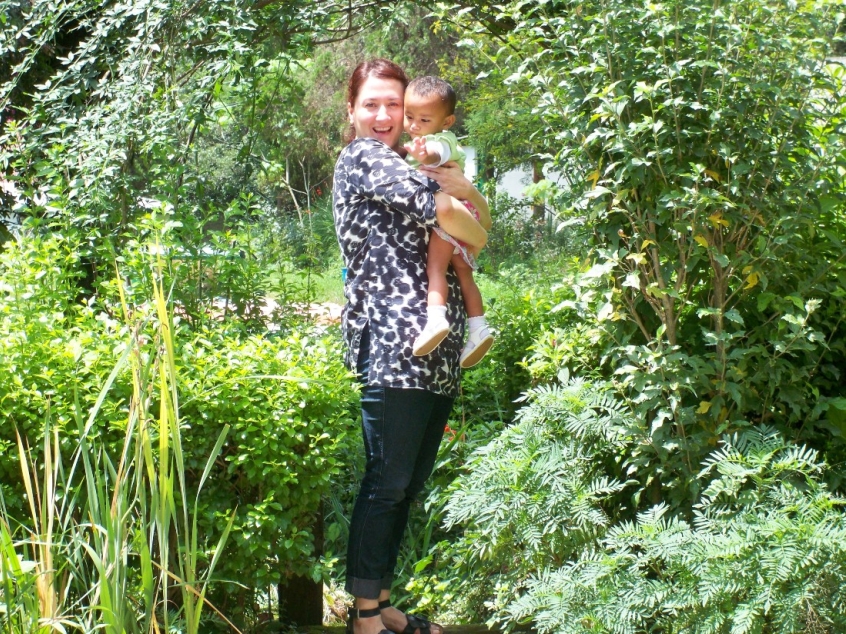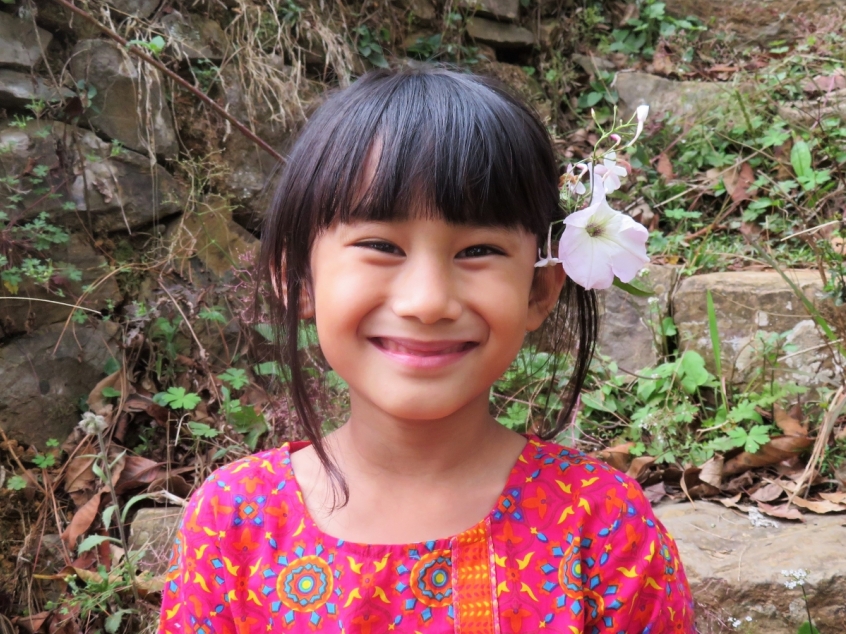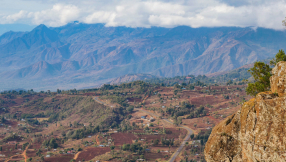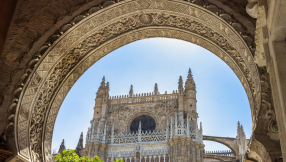
When through the woods, and forest glades I wander And hear the birds sing sweetly in the trees When I look down from lofty mountain grandeur And hear the brook, and feel the gentle breeze (How Great Thou Art, Stuart Hine)
Whenever I sing this beautiful hymn at church, I close my eyes and I'm transported back to 2011. I'm holding my much longed-for baby girl in my arms, singing these words like a lullaby to her. We're standing in the glory of God's creation, at Anandaban Hospital, on the roof of the world.
After a 12 year wait for a child, and a promise from God fulfilled, my husband and I had finally adopted our precious little girl. She was tiny, malnourished, and desperate for love. The doctors at this Leprosy Mission hospital tended to her lovingly, making us feel part of this special family of staff and patients. Our first month together at Anandaban was a time of healing, restoration, and hope.
Our journey is a story of God's faithfulness. Of how He walks with us in our times of deepest sorrow and darkness. Of how when we are struggling to scale the challenges of the mountain in front of is, He is where our help comes from. It's also a story of just how special a place Anandaban is, and how the people of Nepal have been laid on our hearts.
My very first visit to Nepal was in 2009, when my husband Paul and I led a Leprosy Mission trek to raise funds for the amazing work at Anandaban Hospital. As we spent the first few days of our trip shadowing medical staff, we were touched by their gentleness and love. We sat and talked with patients, all with sad stories to tell about how leprosy had stolen feeling in hands, the ability to walk and even limbs. It was hard to hear about the deep emotional wounds that remained. Rejection, loss, broken dreams. Anandaban was their place of hope.
A year later, though we didn't know at the time, our baby was born. She was left at a hospital at a day old and taken to a small children's home in the days after. We'll never know the reason her family couldn't care for, whether it was extreme poverty or even death. But we know she must have been loved because she was taken to a place where her family knew she would be cared for.
In December 2010, as I sat at my desk at The Leprosy Mission an email arrived from the head of The Leprosy Mission Nepal. This wonderful man Shovakhar and his wife Laxmi had become like family to us as we waited for a child. Shovakhar was a huge advocate for us with the Nepali authorities, opening doors that we couldn't.
His email read 'this is your daughter' and attached was a photo of a nine-month-old little girl. You can imagine my joy! It was important that I knew no family was looking for her in Nepal, so we advertised on radio, put notices in local papers etc, but sadly no family came forward. It's ok precious child, God has a plan for you!

Shovakhar and his family remain special to us. He came to Marika's Dedication in England and as her Godfather, stands in the gap for Nepali family. We have stayed with his wider family on returns to Nepal. He's an amazing man of God.
Finally, the following June we had permission to travel to meet our daughter. At sixteen months she was tiny and malnourished. She clung to her carer, terrified of us, new people, new smells and a foreign language. Gently she was placed on my chest and after looking at me for ten minutes she fell asleep. Paul cried as he watched us. He had prayed for our six-year adoption wait that God would bind my heart to our coming child, and that their heart would bind to mine.
Six days later as Paul blew raspberries on our daughter's tummy and she dissolved in to fits of giggles, a volunteer at Anandaban Hospital watched us. I'll never forget her words 'it took you six years to adopt Marika, and six days for her to adopt you'.
Then sings my soul, my Saviour God to Thee, how great Thou art!
Now, as our daughter is on the verge of turning 12, Anandaban Hospital is still a place of healing, restoration and hope. God has His hand on this place, on the patients and the medical team. Because of this they have a new and exciting hope – ending leprosy, not just in Nepal but across the world.
Today, high on the same hill where I first sang to my daughter, pioneering work is taking place to reach the greatest height of all – ending leprosy in our lifetime. In a crumbling lab, a dedicated team is making scientific breakthroughs that will have a global impact.
While there has been an antibiotic cure for leprosy since 1982, there are many challenges when it comes to diagnosing and treating people before they develop terrible disabilities. Leprosy is a disease of poverty and thrives in remote communities where there is little or no healthcare.

Scientific breakthroughs are needed in diagnostics and disability prevention so that people affected by leprosy can have the healthcare and opportunities that they deserve.
People just like Shakti. She has the same potential as any of our own children, but at just 16 years old, her hopes for the future have been stolen by leprosy. Shakti is recovering from a below the knee amputation at Anandaban Hospital. This was the only way to save her life after ulcers caused by leprosy became severely infected.
At Anandaban, Shakti will soon be fitted with a prosthetic leg so that she can walk again. Devastatingly though, she says her dream of becoming a doctor is now out of reach. Although she is a bright student, it is not easy to go to medical school from a low-income family like Shakti's. But she says it's her disability and the stigma attached that make it just too big a hurdle to overcome. I can't help thinking that this could have been my daughter's fate. Living in poverty, she too could have contracted leprosy.
If Shakti's leprosy had been found and treated earlier, she would not have lost her leg. It's that simple. I absolutely believe that in 2022, no child should have leprosy. Nobody should lose a limb when it can be prevented with fast diagnosis and treatment.
Excitingly at Anandaban, a test is being developed that will diagnose leprosy on a smartphone. Imagine people from remote communities like Shakti's being diagnosed on the spot, in their villages! Fast treatment will mean no more disability.
But to continue this ground-breaking research, we have a mountainous challenge ahead. The Research Centre is too small, not fit for purpose and was severely damaged in the disastrous earthquakes of 2015. The lab simply won't pass the upcoming Nepali Government inspection.
If this happens, the chance to end leprosy in our lifetime will be lost.
My daughter is joining me to raise funds for The Leprosy Mission's Greater Heights Campaign. We want to build a new world-class Research Centre at Anandaban from which scientific breakthroughs and new treatments can be found to help end leprosy and lift people affected by this disease to the heights they deserve.
Louise Timmins is Head of Fundraising and Communications at The Leprosy Mission England and Wales.













